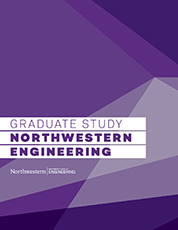Thesis Project Brings Out Smiles
Sue Kim leaned heavily on empathy to create a concept for an app that helps people who used to have braces wear their retainers as instructed.

Sue Kim (EDI ‘24) wants to help you keep your beautiful smile.
Kim generated the idea for an app to assist people who had braces and now wear a retainer to preserve their teeth alignment. The app, AlignGuard, was created for her Thesis project in Northwestern's Master of Science in Engineering Design Innovation (EDI) program.
“I realized there was a significant gap in orthodontic aftercare that technology could fill,” Kim said. “I pursued AlignGuard as a project to merge my passion for design with a real-world problem, aiming to make a tangible difference in people's oral health and self-confidence.”
About 20 percent of US residents have orthodontic treatment at some time in their life, according to the National Institutes of Health. The cost for braces ranges from $5,000 to $6,000, based on a survey by the American Dental Association.
What happens next is a problem that vexes orthodontists. A study by Case Western Reserve University found 4 percent of those who once had braces never wore their retainers. Another 19 percent stopped wearing it when asked 19 to 24 months after their braces were removed.
That’s where AlignGuard can help.
“I describe AlignGuard as a user's personal orthodontic coach,” Kim said. “It's an app specifically designed to support individuals in maintaining their orthodontic health by helping them adhere to their retainer schedules through reminders, progress tracking, and motivational rewards.”
Thesis allows EDI students to dive deeply into a topic of personal interest and apply the design principles learned throughout the program. Kim said one particular EDI emphasis was most meaningful to her work on AlignGuard.
“The Thesis experience taught me the importance of empathy in design – understanding the user's journey, frustrations, and needs,” she said. “Integrating behavioral psychology to effectively motivate users without seeming pushy was a fine line to walk.”
A fine line, indeed. If a parent’s badgering about their kid’s retainers isn’t the right way to motivate someone to remember, what is?
Answering that question helped transform Kim’s project.
“Initially, my focus was heavily on the technical functionality, such as the reminder system,” she said. “However, as the project progressed, I shifted toward prioritizing user engagement and experience, realizing that the key to success lay in how users interacted with AlignGuard daily.”
That revelation pushed Kim down the path of gamification and personalization of the app’s features.
Kim is considering her job opportunities since graduating from EDI. While AlignGuard is just a concept for now, she could see pursuing it as an actual product in the future.
Looking back on her time in EDI, Kim said the opportunity to incorporate lessons learned throughout the program for her final project made Thesis a valuable and rewarding experience.
“Thesis offers EDI students a unique opportunity to apply their skills on a comprehensive project that encompasses research, ideation, design, and testing,” she said. “It reinforced the significance of interdisciplinary knowledge, combining design, psychology, and technology for effective solutions.”

